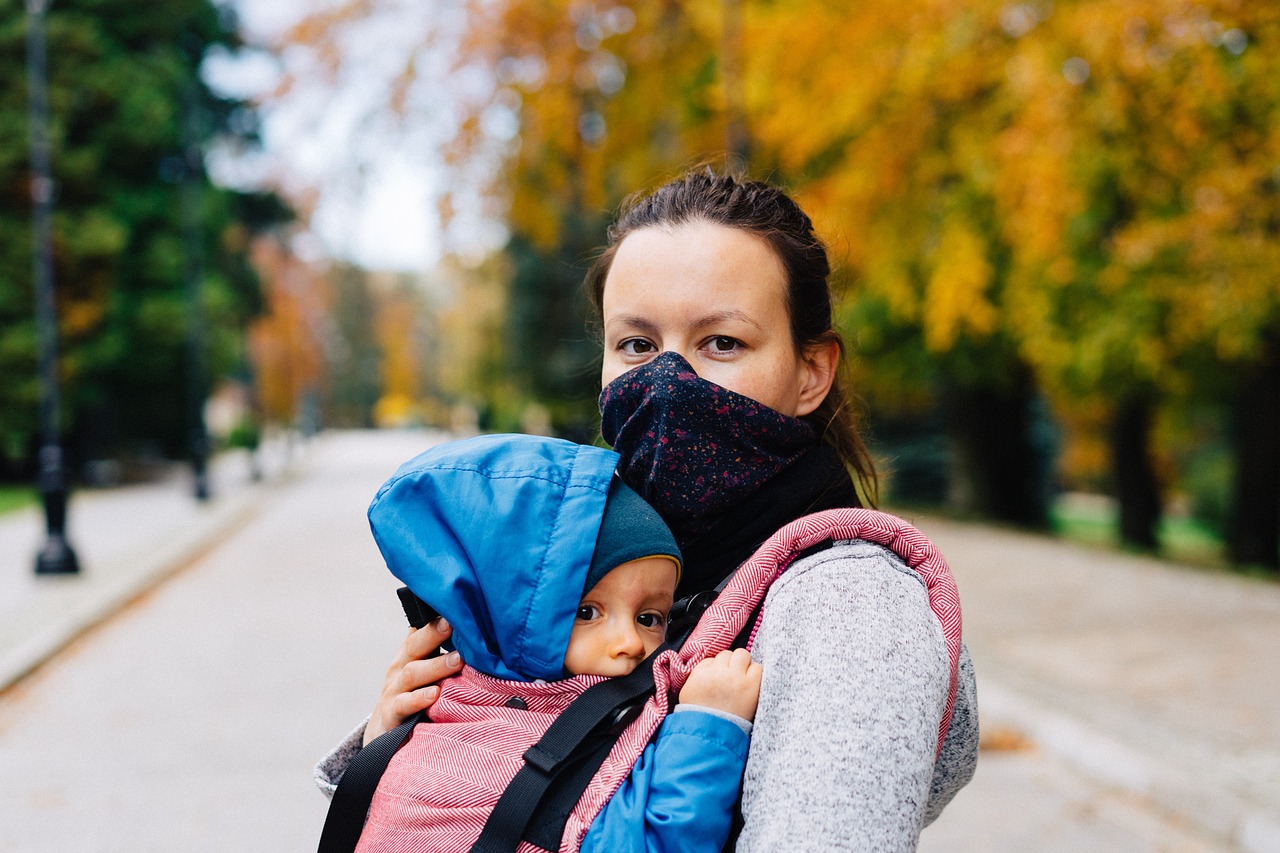Setting up Safety Standards with the Help of Human Behavior Study
In today's world, where safety is paramount, understanding human behavior is more critical than ever. The way we act, react, and interact in various environments directly impacts our safety and the safety of those around us. By studying human behavior, we can develop safety standards that resonate with individuals on a psychological level, making compliance not just a requirement, but a natural part of their daily routines. Imagine a workplace where safety protocols are not just rules, but ingrained habits—this is the transformative power of behavioral insights.
When we think about safety, we often focus on the tangible aspects: the equipment, the protocols, and the training. However, the psychological insights derived from understanding human behavior can significantly enhance these measures. By delving into the motivations, perceptions, and social influences that shape our actions, we can create safety standards that are not only effective but also embraced by everyone involved. This article will explore how these insights can be harnessed to improve safety across various environments, from industrial settings to everyday public spaces.
As we navigate through this topic, we'll uncover the intricate relationship between human behavior and safety compliance. We'll discuss how risk perception alters our approach to safety, the role of social dynamics, and the importance of cultivating a safety culture. By the end of this exploration, you will see how a shift in perspective—viewing safety through the lens of human behavior—can lead to a profound improvement in safety standards and practices.
Understanding human behavior is crucial for establishing effective safety standards. It's not enough to merely implement rules; we need to understand what drives people to follow or ignore these rules. Behavioral insights can inform safety measures in ways that traditional methods simply cannot. For instance, when individuals perceive a risk as significant, they are more likely to adhere to safety protocols. Conversely, if they underestimate the danger, compliance may falter.
Incorporating behavioral science into safety protocols can lead to improved outcomes. By recognizing the psychological factors that influence behavior, organizations can tailor their safety measures to meet the needs and concerns of their workforce. This approach not only enhances compliance but also fosters a sense of ownership among employees, making them active participants in their own safety.
Several psychological factors play a pivotal role in how individuals adhere to safety standards. These include motivation, perception of risk, and the impact of social norms. Understanding these elements can help organizations design more effective safety protocols that resonate with their employees.
Risk perception significantly influences how individuals respond to safety protocols. If someone believes that the risk of an accident is low, they may disregard safety measures. On the other hand, if they perceive a high level of risk, they are likely to follow safety guidelines diligently. This subsection explores how varying perceptions of risk can lead to different safety behaviors and compliance levels, emphasizing the need for clear communication about risks in the workplace.
Training programs can shape risk perception and safety behavior. Effective training not only informs employees about safety protocols but also alters their perception of risks associated with their tasks. When individuals understand the potential consequences of unsafe behavior, they are more likely to adopt a safety-first mindset. This part highlights the importance of effective training in fostering a culture of safety awareness within organizations.
Social norms and peer behavior play a critical role in safety compliance. When individuals see their colleagues following safety protocols, they are more inclined to do the same. Conversely, if they observe peers ignoring safety measures, they may feel justified in doing so themselves. This section examines how group dynamics can either support or undermine safety standards, illustrating the importance of a collective commitment to safety.
Behavioral interventions can enhance safety compliance through various strategies, such as nudges and incentives. These interventions are designed to subtly guide individuals toward safer behaviors without restricting their choices. For example, placing safety reminders in visible locations or offering rewards for safe practices can significantly improve compliance rates. This subsection discusses these strategies and their effectiveness in promoting safer behaviors in different environments.
Establishing a safety culture is essential for sustained compliance. A culture where safety is prioritized and valued by all individuals creates an environment where everyone feels responsible for maintaining safety standards. This section outlines the key elements necessary to foster such an environment, emphasizing the importance of leadership, employee engagement, and continuous improvement.
Leadership plays a pivotal role in cultivating a safety culture. Leaders set the tone for safety practices through their actions and communication. When leaders prioritize safety, it sends a clear message to employees that safety is a core value. This part discusses how leaders can influence attitudes toward safety and inspire a collective commitment to safe practices.
Engaging employees in safety practices can lead to improved compliance. When employees are involved in safety initiatives and decision-making processes, they are more likely to take ownership of their safety and the safety of their colleagues. This subsection explores methods for involving staff in safety practices, highlighting the importance of collaboration and open communication in fostering a safety-conscious environment.
Measuring safety behavior is crucial for evaluating the effectiveness of safety standards. Without proper assessment, it's challenging to identify areas for improvement. This section discusses various methods for assessing compliance, including observational studies and surveys, to gather relevant data that inform future safety initiatives.
Effective data collection techniques are essential for understanding safety behaviors. Organizations can employ various approaches to gather data, such as conducting regular safety audits, implementing employee feedback mechanisms, and utilizing technology to monitor compliance. This part outlines these techniques and their significance in creating a comprehensive safety assessment framework.
Analyzing collected data provides valuable insights into safety behaviors. By examining trends and patterns, organizations can identify strengths and weaknesses in their safety protocols. This subsection discusses how data analysis can inform future safety initiatives and help refine existing standards, ensuring that they remain relevant and effective in promoting safety.
- Why is understanding human behavior important for safety?
Understanding human behavior helps organizations design safety protocols that resonate with individuals, leading to better compliance and a culture of safety. - What role do social norms play in safety compliance?
Social norms influence behavior significantly; when individuals see their peers following safety protocols, they are more likely to comply. - How can organizations measure safety behavior?
Organizations can measure safety behavior through observational studies, surveys, and regular safety audits to assess compliance and identify areas for improvement.

The Importance of Human Behavior in Safety
Understanding human behavior is not just a nice-to-have in the realm of safety; it's absolutely essential. Why, you ask? Because at the heart of every safety protocol are the people who must follow it. If we ignore how humans think, feel, and act, we risk creating safety measures that are ineffective at best, and dangerous at worst. Imagine trying to build a bridge without understanding the forces acting on it—similarly, developing safety standards without considering human behavior is setting ourselves up for failure.
Behavioral insights can significantly enhance safety measures. For instance, if we know that people often underestimate risks, we can tailor our safety communications to address this bias. Instead of simply stating the rules, we can create engaging training sessions that challenge misconceptions about safety. This can be done through real-life scenarios and interactive discussions that resonate with employees on a personal level.
Moreover, compliance isn't just about rules; it’s about motivation. When people understand the 'why' behind safety protocols, they are more likely to adhere to them. This is where psychological principles come into play. By tapping into intrinsic motivations—like the desire to keep oneself and others safe—we can foster a culture where safety is prioritized. Think of it as planting seeds of awareness that grow into a robust safety culture.
Additionally, social influences cannot be overlooked. Humans are inherently social creatures, and our behaviors are often shaped by those around us. If safety is a shared value within a team, individuals are more likely to comply with safety standards. This can be further enhanced through peer-led initiatives where employees encourage each other to follow safety protocols, creating a supportive environment that reinforces positive behavior.
In summary, the importance of human behavior in safety cannot be overstated. By understanding the psychological and social factors that influence compliance, organizations can develop more effective safety protocols that resonate with individuals on a deeper level. This not only improves adherence to safety standards but also cultivates a culture where safety is genuinely valued. After all, safety isn’t just a policy; it’s a shared commitment that begins with understanding the people behind the protocols.

When it comes to safety compliance, understanding the psychological factors at play is essential. These factors can deeply influence how individuals perceive risks and adhere to safety protocols. For instance, motivation plays a significant role in whether someone chooses to follow safety guidelines. If an individual feels personally invested in the outcome—such as the safety of themselves or their colleagues—they are more likely to comply with established safety measures. On the other hand, if they perceive safety protocols as mere formalities, compliance may wane.
Moreover, the perception of risk is another critical psychological factor. People tend to respond differently to safety standards based on how they perceive the risks involved. For example, if someone believes that a particular task is low-risk, they might neglect safety precautions. Conversely, if they view the task as high-risk, they are more likely to take safety seriously. This variance in risk perception can lead to a discrepancy in safety behaviors, which can be quite alarming in environments where safety is paramount.
Social norms also play a pivotal role in shaping safety compliance. Humans are social creatures, and our behaviors are often influenced by those around us. If a workplace fosters a culture where safety is prioritized and everyone adheres to safety protocols, individuals are more likely to follow suit. However, if they observe peers ignoring safety measures, this can create a dangerous ripple effect, leading to widespread non-compliance. The interplay between social influences and individual behavior highlights the importance of fostering a strong safety culture within organizations.
The relationship between risk perception and safety behavior is complex yet fascinating. When individuals accurately assess the risks associated with a task, they are more likely to engage in safe behaviors. However, when their risk perception is skewed—either overestimating or underestimating the dangers—they may behave recklessly or excessively cautious. This inconsistency can lead to a range of outcomes, from minor accidents to severe incidents. Understanding how to communicate risks effectively is crucial for shaping safe behaviors.
Training programs are instrumental in shaping both risk perception and safety behavior. By providing relevant information and practical skills, organizations can help individuals recognize potential hazards and understand the importance of adhering to safety protocols. Effective training not only raises awareness but also empowers employees to make informed decisions regarding their safety and the safety of others. A well-structured training program can transform risk perception from a vague concept into a tangible reality, fostering a culture of safety awareness.
Social influences can either reinforce or undermine safety compliance. When leaders and peers model safe behaviors, they create an environment where safety is valued. This can be achieved through regular safety meetings, open discussions about safety concerns, and recognition of safe practices. On the flip side, if individuals witness unsafe behaviors being tolerated or overlooked, it can lead to a normalization of risk-taking, which is detrimental to overall safety. To counteract this, organizations must actively engage in promoting positive safety behaviors through peer accountability and leadership endorsement.
Implementing behavioral interventions can significantly enhance safety compliance. Strategies such as nudges—subtle prompts that encourage safe behavior—can be effective in guiding individuals towards making safer choices. For example, placing reminders about safety protocols in visible locations can serve as a constant reinforcement of the importance of compliance. Additionally, providing incentives for safe behaviors can motivate individuals to prioritize safety, creating a win-win situation for both employees and employers.
- What are the key psychological factors affecting safety compliance?
Key factors include motivation, risk perception, and social norms. - How can training improve safety compliance?
Training enhances awareness and equips individuals with the skills to recognize and respond to hazards. - What role do social influences play in safety behavior?
Social norms can either promote or hinder compliance, depending on the behaviors exhibited by peers and leaders.

Risk Perception and Safety Behavior
Understanding risk perception is fundamental to shaping safety behavior. It's fascinating how our minds interpret risks differently, isn't it? For instance, two individuals can face the same safety protocol but react in entirely different ways based on their personal experiences, knowledge, and even emotions. This divergence in perception can lead to significant variations in compliance with safety measures. People often underestimate risks that seem distant or abstract, while overestimating those that are immediate and tangible. This phenomenon can create a disconnect between what is deemed safe and what individuals actually do in practice.
To illustrate this point, consider a workplace where employees are required to wear safety helmets. One worker may perceive the risk of head injury as high due to a past incident, prompting them to wear their helmet consistently. In contrast, another worker, who has never witnessed or experienced an accident, might view the helmet as an unnecessary burden, leading to non-compliance. This discrepancy highlights the need for organizations to address risk perception directly in their safety training programs. By fostering a deeper understanding of risks, companies can enhance compliance and ultimately create a safer environment.
Moreover, the role of social influences cannot be overlooked. Our perceptions are often shaped by those around us. If the majority of a team disregards safety protocols, even the most cautious individuals may feel pressured to conform. Social norms can either bolster safety behaviors or undermine them, making it essential for organizations to cultivate a culture where safety is prioritized. This can be achieved through consistent messaging from leadership, peer reinforcement, and creating an environment where safety discussions are encouraged.
Additionally, training and education play a pivotal role in shaping risk perception. Well-designed training programs can effectively alter how employees view risks associated with their tasks. For example, using real-life scenarios and interactive simulations can help individuals grasp the potential consequences of their actions, thereby adjusting their safety behaviors. When people understand the "why" behind safety protocols, they are more likely to embrace them.
In conclusion, the interplay between risk perception and safety behavior is complex yet critical. By addressing how individuals perceive risks and the influences that shape these perceptions, organizations can enhance compliance with safety standards. This not only protects employees but also fosters a culture of safety that resonates throughout the organization. As we delve deeper into the psychology of safety, we uncover the powerful impact of understanding human behavior on creating effective safety protocols.
- What is risk perception? Risk perception refers to how individuals interpret and evaluate the risks associated with certain behaviors or situations.
- How does risk perception affect safety behavior? Individuals with a heightened sense of risk are more likely to adhere to safety protocols, while those who underestimate risks may neglect safety measures.
- Why are social influences important in safety compliance? Social influences can either encourage or discourage safety behaviors, making it essential to foster a supportive safety culture within teams.
- What role does training play in shaping risk perception? Effective training can enhance understanding of risks and motivate individuals to comply with safety protocols through real-life scenarios and discussions.

Training and Education's Role
When it comes to enhancing safety standards, training and education are not just optional; they are absolutely essential. Think of training as the foundation of a sturdy building. Without a solid base, everything else is at risk. In various environments—be it workplaces, schools, or public spaces—effective training programs can significantly shape individuals' risk perception and their resulting safety behaviors. By equipping people with the necessary knowledge and skills, organizations can foster a culture where safety is prioritized and ingrained in daily practices.
One of the key aspects of effective training is its ability to address the psychological factors influencing safety compliance. For instance, when employees understand the rationale behind specific safety protocols, they are more likely to adhere to them. This understanding can reduce feelings of complacency and increase the perceived importance of following safety guidelines. Moreover, training sessions that include real-life scenarios and hands-on practice can make the learning experience more engaging and memorable.
Moreover, it’s crucial to tailor training programs to the unique needs of different groups. For example, the training provided to factory workers will differ significantly from that designed for office staff. By customizing training, organizations can ensure that the information is relevant and applicable, thus enhancing the likelihood of compliance. Below is a table that outlines different training methods and their effectiveness:
| Training Method | Description | Effectiveness |
|---|---|---|
| Workshops | Interactive sessions where participants engage in discussions and activities. | High |
| Online Courses | Self-paced learning modules accessible via the internet. | Medium |
| On-the-Job Training | Hands-on training conducted in the actual work environment. | Very High |
| Simulations | Realistic scenarios that mimic actual safety challenges. | High |
Additionally, continuous education is vital for maintaining a high standard of safety. Regular refresher courses can help reinforce safety protocols and keep employees updated on any changes in regulations or procedures. This ongoing commitment to education not only improves compliance but also demonstrates to employees that their safety is a priority for the organization. When individuals see that their employer invests in their safety education, it fosters a sense of trust and responsibility towards maintaining a safe environment.
Ultimately, the role of training and education extends beyond just imparting knowledge; it cultivates a mindset where safety is seen as a shared responsibility. When everyone is on board, the entire organization benefits from a safer, more secure atmosphere. So, let’s ask ourselves: wouldn’t we all want to be part of a team that values safety as much as we do?
- What is the importance of training in safety compliance?
Training is crucial as it equips individuals with the knowledge and skills necessary to recognize risks and adhere to safety protocols. - How often should safety training be conducted?
Regular training sessions, including annual refreshers, are recommended to keep safety standards up to date and reinforce compliance. - Can training influence employee attitudes towards safety?
Yes, effective training can significantly improve employees' perceptions of safety, making them more likely to prioritize it in their daily activities.

Social Influences on Safety Compliance
Understanding that social influences play a significant role in safety compliance is essential for developing effective safety standards. People are inherently social beings; we often look to others for cues on how to behave, particularly in unfamiliar situations. This phenomenon is known as social proof, where individuals conform to the actions of others in an attempt to reflect correct behavior in a given context. When it comes to safety, if employees see their peers adhering to safety protocols, they are more likely to follow suit. Conversely, if they observe non-compliance, it can create a dangerous ripple effect, leading to a culture where safety is compromised.
Moreover, the impact of peer pressure cannot be underestimated. In many work environments, the desire to fit in can overshadow an individual’s better judgment regarding safety practices. For instance, if a group of workers consistently skips wearing protective gear because “everyone else does it,” new employees may feel compelled to follow that lead, even if they recognize the risks involved. This highlights the need for organizations to foster a culture where safety compliance is not only encouraged but celebrated.
Social norms also dictate the level of risk individuals perceive in their environment. For example, if a workplace promotes a strong safety culture, employees are more likely to view safety compliance as a norm rather than an exception. This can be reinforced through various strategies, such as:
- Regular safety meetings to discuss incidents and preventive measures.
- Recognition programs that reward safe behavior among employees.
- Open communication channels where employees can voice concerns without fear of reprisal.
Additionally, the role of leadership in influencing social behavior cannot be overstated. Leaders who actively demonstrate a commitment to safety can inspire their teams to adopt similar attitudes. When leaders prioritize safety in their daily operations and decision-making processes, it sends a clear message that safety is a shared responsibility. This can be further enhanced by establishing mentorship programs where seasoned employees guide newcomers on the importance of adhering to safety protocols.
In conclusion, social influences on safety compliance are multifaceted and deeply embedded in workplace dynamics. By understanding these influences, organizations can implement targeted strategies that not only promote safety but also create a supportive environment where compliance becomes second nature. After all, when safety becomes a collective value embraced by all, the likelihood of accidents and injuries diminishes significantly.
Q1: How can social influences improve safety compliance in the workplace?
A1: Social influences can improve safety compliance by fostering a culture where safe practices are the norm. When employees observe their peers adhering to safety protocols, they are more likely to follow suit, creating a supportive environment that prioritizes safety.
Q2: What role do leaders play in shaping safety culture?
A2: Leaders play a pivotal role in shaping safety culture by modeling safe behaviors, communicating the importance of safety, and recognizing employees who adhere to safety standards. Their commitment can inspire teams to prioritize safety in their daily tasks.
Q3: How can organizations measure the impact of social influences on safety compliance?
A3: Organizations can measure the impact of social influences on safety compliance through surveys, focus groups, and observational studies that assess employee behaviors and attitudes toward safety practices.

Behavioral Interventions for Safety Improvement
When it comes to enhancing safety in various environments, behavioral interventions are like the secret sauce that takes a good safety protocol and turns it into something extraordinary. These interventions are designed to nudge individuals toward safer behaviors without imposing strict rules or regulations. Think of it as gently guiding someone to take the safer path, rather than forcing them to walk it. By understanding the psychology behind human behavior, we can implement strategies that resonate with individuals, making compliance feel less like a chore and more like a natural choice.
One of the most effective behavioral interventions is the use of nudges. A nudge is a subtle prompt that encourages individuals to make better choices without restricting their freedom to choose. For instance, placing safety gear in prominent locations or using clear signage can remind individuals to adhere to safety protocols. Imagine walking into a workplace where hard hats are not just available but are visually appealing and placed right at the entrance. This simple act can significantly increase the likelihood that employees will wear them.
Another powerful strategy is the implementation of incentives. Rewards for safe behavior can motivate individuals to prioritize safety. These incentives can range from recognition programs to tangible rewards, such as gift cards or extra time off. When people feel appreciated for following safety measures, it creates a positive feedback loop that encourages ongoing compliance. For example, a company might offer a monthly reward for teams that report zero safety incidents, fostering a culture of safety where everyone feels involved and responsible.
Moreover, peer influence can serve as a significant behavioral intervention. When individuals see their colleagues engaging in safe practices, they are more likely to follow suit. This is where the power of social norms comes into play. Establishing a norm around safety can be achieved through team discussions, safety champions, or simply by highlighting safe behaviors in company communications. When safety becomes a shared value, it transforms from a mere obligation into a collective goal.
To illustrate the impact of these interventions, consider the following table that summarizes various behavioral strategies and their outcomes:
| Intervention Type | Description | Expected Outcome |
|---|---|---|
| Nudges | Subtle prompts to encourage safe behavior | Increased compliance with safety protocols |
| Incentives | Rewards for adhering to safety standards | Enhanced motivation and commitment to safety |
| Peer Influence | Encouraging safe behaviors through social norms | Higher rates of safety compliance among employees |
In conclusion, behavioral interventions are not just about enforcing rules; they are about understanding and influencing the choices people make every day. By incorporating nudges, incentives, and leveraging peer influence, organizations can create an environment where safety is prioritized and valued. When individuals feel empowered and supported in their safety efforts, compliance becomes a natural extension of their behavior rather than a forced obligation.
- What are behavioral interventions? Behavioral interventions are strategies designed to influence individuals' behavior towards safer practices without imposing strict regulations.
- How do nudges work in safety compliance? Nudges work by subtly prompting individuals to make safer choices, such as placing safety equipment in easily accessible locations.
- Can incentives really improve safety behavior? Yes, incentives can motivate individuals to prioritize safety by rewarding them for their compliance and safe practices.
- What role does peer influence play in safety? Peer influence can significantly impact safety compliance as individuals are more likely to follow safe practices when they see their colleagues doing the same.

Creating a Safety Culture
Establishing a safety culture is not just a box to check; it’s a fundamental shift in how an organization views safety. Imagine a workplace where safety is as integral as the air we breathe. In such an environment, every employee feels responsible for not only their own safety but also for the safety of their colleagues. This collective mindset fosters a proactive approach to identifying hazards and mitigating risks before they escalate into serious incidents.
To create this culture, organizations need to embrace several key elements. First and foremost, it requires a commitment from the top down. Leaders must not only endorse safety policies but also embody them in their daily actions. When leaders prioritize safety, it sends a clear message that safety is a core value of the organization. This can be illustrated through regular safety meetings, transparent communication about safety incidents, and open discussions regarding safety improvements.
Furthermore, employees should be actively engaged in safety practices. When individuals feel they have a voice in safety initiatives, their commitment to adhering to safety protocols increases significantly. For instance, organizations can implement employee feedback systems where staff can share their insights or concerns regarding safety measures. This not only empowers employees but also provides valuable information that can enhance safety standards. The following are some effective methods to engage employees:
- Regular training sessions that involve interactive elements, allowing employees to practice safety protocols.
- Incorporating safety discussions into team meetings, making safety a regular topic of conversation.
- Recognizing and rewarding safe behaviors, which can motivate others to follow suit.
Moreover, it’s essential to foster an environment where employees feel comfortable reporting safety issues without fear of retribution. This transparency is crucial for identifying potential hazards and addressing them promptly. When employees know that their concerns will be taken seriously, they are more likely to report unsafe conditions or behaviors, leading to a safer workplace overall.
Another significant aspect of creating a safety culture is continuous improvement. Organizations should regularly review and update their safety protocols based on the latest data and feedback. This iterative process ensures that safety measures evolve alongside changing workplace dynamics and emerging risks. By implementing a system for ongoing evaluation, organizations can adapt to new challenges and maintain a high standard of safety.
In summary, creating a safety culture is a multifaceted endeavor that requires commitment, engagement, and continuous improvement. By prioritizing safety at all levels of the organization and actively involving employees in safety practices, companies can cultivate an environment where safety is not just a policy but a shared value. This culture not only protects employees but also enhances overall productivity and morale.
Q: What is a safety culture?
A: A safety culture refers to the shared values, beliefs, and practices regarding safety within an organization. It emphasizes the importance of safety in everyday operations and encourages everyone to take responsibility for maintaining a safe environment.
Q: How can leaders promote a safety culture?
A: Leaders can promote a safety culture by demonstrating their commitment to safety through their actions, encouraging open communication about safety concerns, and actively involving employees in safety initiatives.
Q: Why is employee engagement important in safety practices?
A: Employee engagement is crucial because it fosters a sense of ownership and responsibility towards safety. When employees are involved in safety discussions and initiatives, they are more likely to adhere to safety protocols and report potential hazards.
Q: What role does continuous improvement play in safety culture?
A: Continuous improvement ensures that safety measures are regularly reviewed and updated based on new information and feedback. This helps organizations adapt to changing conditions and maintain high safety standards.

Leadership's Role in Promoting Safety
When it comes to fostering a culture of safety, the role of leadership cannot be overstated. Strong leaders set the tone for how safety is perceived and prioritized within an organization. Think of leaders as the captains of a ship; their direction and decisions can either steer the crew toward calm waters or into turbulent seas. Just like a captain needs to ensure that every crew member understands their role in maintaining the ship’s integrity, leaders must communicate the importance of safety protocols and ensure that all employees are engaged in upholding them.
Effective leadership in safety involves more than just enforcing rules; it requires a genuine commitment to creating an environment where safety is valued. This means that leaders must actively participate in safety initiatives, demonstrating their commitment through action. For instance, when leaders regularly engage in safety training sessions or participate in safety audits, they send a clear message that safety is a shared responsibility. Moreover, their visible commitment can significantly boost morale and encourage employees to adopt safer practices.
Leaders can also play a pivotal role in shaping safety policies by incorporating feedback from employees. By fostering an open dialogue, leaders can gather insights on potential hazards and the effectiveness of existing safety measures. This not only empowers employees but also builds trust, as they see that their opinions are valued and considered in decision-making processes. Furthermore, leaders should recognize and reward safe behaviors, creating a positive reinforcement loop that encourages adherence to safety standards.
Another essential aspect of leadership in promoting safety is the establishment of clear communication channels. Leaders must ensure that safety information is disseminated effectively and that all employees are aware of the protocols in place. Regular safety meetings, newsletters, and digital communication platforms can help keep safety at the forefront of everyone’s mind. When employees are well-informed, they are more likely to comply with safety standards and contribute to a safer work environment.
To summarize, the role of leadership in promoting safety can be encapsulated in several key actions:
- Lead by Example: Demonstrate commitment to safety through personal actions.
- Engage Employees: Foster open communication and incorporate employee feedback.
- Recognize Safe Behavior: Reward and acknowledge adherence to safety practices.
- Communicate Effectively: Ensure that safety information is accessible and clear to all employees.
Ultimately, a leader's influence on safety culture can lead to significant improvements in compliance and overall workplace safety. By prioritizing safety, leaders not only protect their employees but also contribute to the long-term success and sustainability of the organization.
- What is the most important role of a leader in promoting safety? The most important role is to lead by example, demonstrating a personal commitment to safety and encouraging others to do the same.
- How can leaders engage employees in safety practices? Leaders can engage employees by fostering open communication, seeking their feedback on safety measures, and involving them in safety initiatives.
- Why is recognition important in safety compliance? Recognition reinforces positive behavior, motivating employees to adhere to safety standards and creating a culture of safety.
- What are effective communication strategies for safety? Regular safety meetings, newsletters, and digital platforms are effective ways to keep safety information accessible and top-of-mind for employees.

Employee Engagement in Safety Practices
Engaging employees in safety practices is not just a good idea; it's a game changer for any organization aiming to enhance its safety culture. When employees feel involved and valued, they are more likely to take ownership of their safety responsibilities. But how do we foster this engagement? It starts with creating an environment where safety is not just a checkbox but a core value shared by everyone.
One effective way to engage employees is through collaborative training sessions. These sessions can transform the mundane into the meaningful by allowing employees to share their experiences and insights. Imagine a workplace where safety training is not a lecture but an interactive workshop where everyone contributes. This not only enhances learning but also builds camaraderie among team members. When employees see that their opinions matter, they feel more connected to the safety protocols being implemented.
Furthermore, involving employees in the decision-making process regarding safety measures can significantly boost their engagement. When they are part of the conversation, they are more likely to adhere to the practices that they helped create. For instance, consider establishing a safety committee comprising employees from various departments. This committee can serve as a platform for discussing safety concerns and proposing solutions. Not only does this empower employees, but it also ensures that safety measures are tailored to the actual working conditions and challenges faced on the ground.
Additionally, recognizing and rewarding safe behaviors can motivate employees to prioritize safety. Implementing a rewards program that acknowledges individuals or teams who consistently follow safety protocols can create a positive reinforcement loop. For example, companies can celebrate 'Safety Champions' each month, showcasing their commitment to safety in newsletters or meetings. This not only boosts morale but also encourages others to follow suit.
Ultimately, the goal is to cultivate a culture where safety is everyone’s responsibility. When employees are engaged, they become proactive rather than reactive. They start to look out for one another and take the initiative to address potential hazards before they escalate. This shift in mindset can lead to a significant reduction in workplace accidents and injuries.
In conclusion, fostering employee engagement in safety practices is about more than just compliance; it's about building a community where safety is a shared value. By involving employees in training, decision-making, and recognition programs, organizations can create an environment where safety thrives, benefiting everyone involved.
- Why is employee engagement important for safety practices? Employee engagement is crucial because it fosters a sense of ownership and responsibility, leading to higher compliance with safety protocols.
- How can organizations involve employees in safety decision-making? Organizations can form safety committees or conduct regular safety meetings where employees can voice their concerns and suggestions.
- What are some effective ways to recognize safe behavior? Implementing a rewards program that highlights 'Safety Champions' or recognizing teams in company meetings can motivate employees to prioritize safety.

Measuring Safety Behavior and Compliance
Measuring safety behavior is crucial for evaluating the effectiveness of safety standards. Without a proper measurement system in place, organizations can struggle to identify areas that need improvement, leading to potential risks and hazards. By implementing robust measurement techniques, companies can gain invaluable insights into how well their safety protocols are being followed and where adjustments might be necessary.
One of the fundamental aspects of measuring safety behavior is understanding the various methods available for assessment. Organizations can utilize a combination of qualitative and quantitative approaches to gather comprehensive data. For instance, surveys can be distributed to employees to gauge their perceptions of safety practices, while observational studies can provide direct insights into actual behavior in the workplace. This blend of methods ensures a well-rounded understanding of safety compliance.
Furthermore, it’s vital to analyze the data collected effectively. Analyzing behavioral data not only highlights compliance levels but also uncovers patterns and trends that may not be immediately apparent. For example, if a significant number of employees report feeling unsafe in a specific area, this could indicate a need for further investigation and potential changes to safety protocols. This proactive approach can prevent accidents before they occur.
To illustrate the importance of measuring safety behavior, consider the following table that outlines common data collection techniques and their benefits:
| Data Collection Technique | Description | Benefits |
|---|---|---|
| Surveys | Questionnaires distributed to employees to gather feedback on safety practices. | Easy to administer, provides a broad range of responses. |
| Observational Studies | Direct observation of employee behavior in relation to safety protocols. | Offers real-time insights into compliance and safety culture. |
| Incident Reports | Documentation of safety incidents and near misses. | Helps identify patterns and areas needing improvement. |
In addition to these techniques, organizations should also consider engaging employees in the measurement process. When employees feel they have a voice in safety discussions, they are more likely to adhere to safety standards. This engagement can take the form of feedback sessions or safety committees where employees can express their thoughts and contribute to safety initiatives. By fostering an environment where safety is a shared responsibility, organizations can enhance compliance and create a culture that prioritizes safety.
Finally, measuring safety behavior isn’t just about collecting data; it’s about using that data to drive change. Organizations should regularly review their safety metrics and adjust their strategies accordingly. This iterative process ensures that safety standards evolve with the workforce and the environment, ultimately leading to a safer workplace for everyone.
- What are the most effective methods for measuring safety behavior?
Effective methods include surveys, observational studies, and analysis of incident reports. Each method provides unique insights into safety compliance.
- How can employee engagement improve safety compliance?
Engaging employees in safety discussions and initiatives fosters a sense of ownership and responsibility, leading to higher compliance rates.
- Why is data analysis important for safety behavior measurement?
Data analysis helps identify trends and patterns, allowing organizations to make informed decisions to enhance safety protocols.

Data Collection Techniques
When it comes to enhancing safety standards, understanding the behaviors that drive compliance is essential. One of the most effective ways to gain this understanding is through . These techniques help organizations gather insights into how individuals interact with safety protocols, allowing for a more tailored approach to safety management. But what exactly are these techniques, and how can they be applied effectively?
First off, let’s talk about surveys. Surveys are a powerful tool for collecting quantitative data on safety behaviors and perceptions. By distributing questionnaires to employees, organizations can gauge their understanding of safety protocols and identify areas where knowledge may be lacking. For instance, a survey might ask questions such as:
- How confident do you feel about following safety procedures?
- Have you received adequate training on safety measures?
- What barriers do you face in adhering to safety standards?
Another valuable technique is observational studies. This method involves watching individuals in their natural work environment to see how they interact with safety measures. Observations can reveal discrepancies between what employees say they do and what they actually do, providing a clearer picture of compliance. For example, if employees claim to wear protective gear but are often seen without it, this could indicate a gap in safety culture that needs to be addressed.
Additionally, focus groups can be a great way to gather qualitative data. Bringing together small groups of employees to discuss safety practices allows for deeper conversations about their experiences and perceptions. This method not only uncovers insights that surveys may miss but also fosters a sense of community, as employees feel their voices are being heard. The dynamic nature of focus groups can lead to unexpected revelations about safety culture that can significantly influence future initiatives.
To sum it all up, the combination of surveys, observational studies, and focus groups creates a comprehensive data collection strategy that can provide invaluable insights into safety behaviors. Each technique contributes uniquely, and when used together, they can paint a detailed picture of how safety standards are perceived and followed within an organization.
- What are the key benefits of using data collection techniques for safety compliance?
Data collection techniques provide insights into employee behaviors and attitudes, identify gaps in training, and help organizations tailor their safety protocols to better meet the needs of their workforce. - How often should organizations conduct surveys or observational studies?
It’s advisable to conduct these assessments regularly, such as quarterly or bi-annually, to ensure that safety measures remain effective and relevant. - Can data collection influence safety culture?
Absolutely! By actively involving employees in the data collection process, organizations can foster a culture of safety, where individuals feel empowered to contribute to safety initiatives.

Analyzing Behavioral Data for Insights
When it comes to enhancing safety standards, analyzing behavioral data is not just a luxury—it's a necessity. Imagine trying to navigate a ship without a map; that’s what it feels like to implement safety measures without understanding the behaviors that drive compliance. By delving deep into the data collected through various methods, organizations can uncover patterns and trends that reveal how individuals interact with safety protocols.
One of the most effective ways to gather this data is through surveys and observational studies. Surveys can provide quantitative data on how employees perceive safety measures, while observational studies can offer qualitative insights into actual behaviors in real-world settings. For instance, a survey might reveal that employees feel overwhelmed by safety protocols, leading to non-compliance. On the other hand, observational studies might show that employees are more likely to adhere to safety standards when they see their peers doing the same. This dual approach allows organizations to get a well-rounded view of safety behaviors.
Once the data is collected, the next step is to analyze it for actionable insights. This involves looking for correlations between different variables—such as the level of training received and the frequency of safety incidents. For example, a table might illustrate the relationship between training hours and compliance rates:
| Training Hours | Compliance Rate (%) |
|---|---|
| 0-5 | 45 |
| 6-10 | 70 |
| 11-15 | 85 |
| 16+ | 95 |
This table clearly shows that as training hours increase, so does the compliance rate. Such insights can lead organizations to invest more in training programs, ultimately fostering a safer environment. However, it’s important to remember that data analysis is not just about numbers; it’s about understanding the story behind those numbers. For example, if data shows a spike in incidents during a particular shift, it may indicate that the staffing levels or the experience of the employees on that shift need to be addressed.
Moreover, organizations can leverage data visualization tools to present findings in an easily digestible format. Graphs and charts can help stakeholders quickly grasp complex data, making it easier to communicate the importance of safety initiatives. When data is presented visually, it becomes more relatable and can spark conversations that lead to meaningful changes.
In summary, analyzing behavioral data is a powerful tool for improving safety standards. By collecting, analyzing, and visualizing data, organizations can gain valuable insights into how safety protocols are perceived and followed. This, in turn, allows them to tailor their safety measures to better fit the needs and behaviors of their employees, ultimately leading to a safer workplace.
- Why is behavioral data important for safety compliance? Behavioral data helps organizations understand how employees interact with safety protocols, allowing for targeted improvements.
- What methods can be used to collect behavioral data? Surveys, observational studies, and interviews are common methods for gathering data on safety behaviors.
- How can data analysis improve safety standards? By identifying trends and correlations, organizations can make informed decisions to enhance safety measures and training programs.
- What role do visualizations play in data analysis? Visualizations help communicate complex data in an understandable way, making it easier for stakeholders to grasp important insights.
Frequently Asked Questions
-
Why is understanding human behavior important for safety standards?
Understanding human behavior is crucial because it helps us identify how people perceive risks and why they may or may not follow safety protocols. By grasping these psychological insights, we can develop safety measures that resonate with individuals, leading to better compliance and safer environments.
-
What psychological factors influence safety compliance?
Several psychological factors play a role in safety compliance, including motivation, risk perception, and social norms. For instance, if individuals feel motivated to adhere to safety standards and perceive the risks as significant, they are more likely to comply. Additionally, the influence of peers can either encourage or discourage safe behaviors.
-
How does risk perception affect safety behaviors?
Risk perception significantly impacts how individuals respond to safety protocols. If someone perceives a situation as high-risk, they are more likely to follow safety measures closely. Conversely, if they view the risk as minimal, compliance may drop, leading to unsafe behaviors. This highlights the need for effective communication about risks.
-
What role do training and education play in safety?
Training and education are vital in shaping individuals' understanding of risks and safety behaviors. Effective training programs can raise awareness about potential hazards and teach best practices, ultimately fostering a culture of safety within organizations.
-
How do social influences affect safety compliance?
Social influences, such as group dynamics and peer behavior, can significantly affect safety compliance. When safety is prioritized within a group, individuals are more likely to adhere to safety standards. Conversely, negative peer pressure can lead to unsafe practices, underscoring the importance of fostering a supportive safety culture.
-
What are behavioral interventions for improving safety?
Behavioral interventions, such as nudges and incentives, can effectively promote safer behaviors. For example, simple reminders or rewards for following safety protocols can encourage compliance and create a more safety-conscious environment.
-
How can organizations create a safety culture?
Creating a safety culture involves establishing an environment where safety is prioritized and valued by everyone. Key elements include strong leadership support, employee engagement in safety practices, and open communication about safety concerns and procedures.
-
What is the role of leadership in promoting safety?
Leadership plays a pivotal role in cultivating a safety culture. Leaders can influence attitudes toward safety through their actions, communication, and commitment to safety practices. When leaders prioritize safety, it sets a powerful example for others to follow.
-
How can employees be engaged in safety practices?
Engaging employees in safety practices can be achieved through participatory approaches, such as involving them in safety committees or decision-making processes. This involvement fosters a sense of ownership and accountability, leading to improved compliance and commitment to safety.
-
Why is measuring safety behavior important?
Measuring safety behavior is crucial for evaluating the effectiveness of safety standards and identifying areas for improvement. By understanding how individuals behave in relation to safety protocols, organizations can refine their strategies and enhance overall safety compliance.
-
What data collection techniques are used to measure safety behavior?
Effective data collection techniques include surveys, observational studies, and incident reports. These methods provide valuable insights into safety behaviors and help organizations assess compliance levels and identify trends or areas that need attention.
-
How can analyzing behavioral data improve safety initiatives?
Analyzing collected behavioral data can reveal patterns and insights that inform future safety initiatives. By understanding the factors that influence safety compliance, organizations can adjust their strategies, refine existing standards, and ultimately create a safer environment for everyone.



















